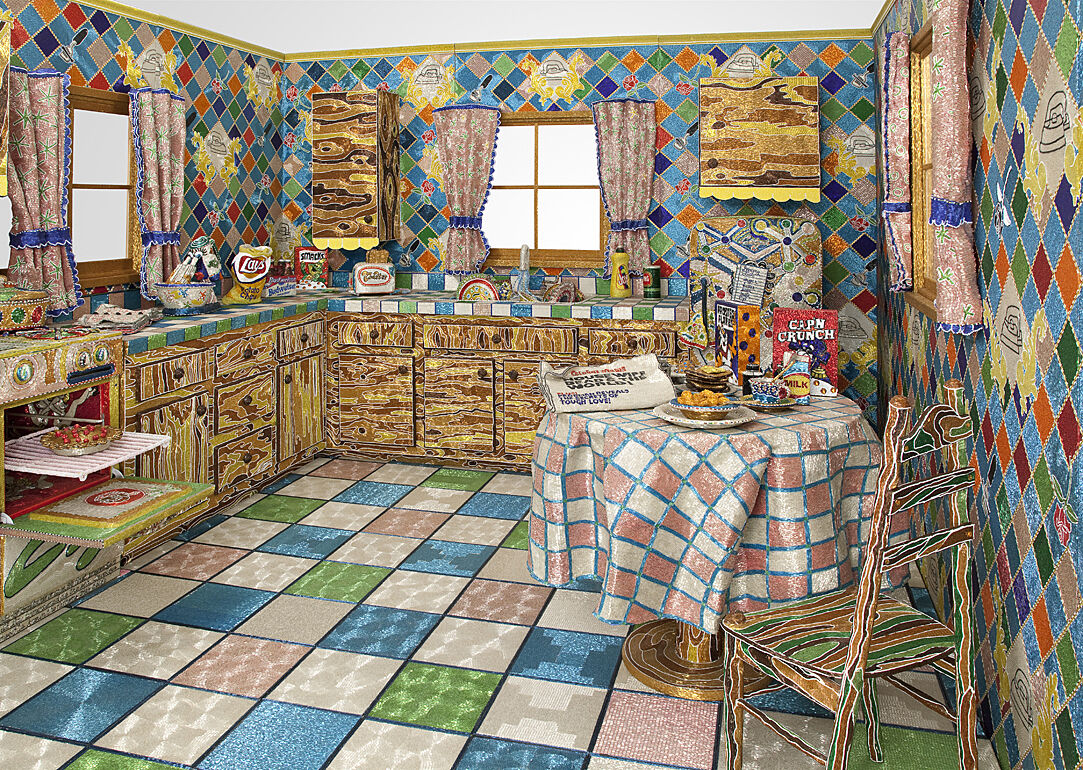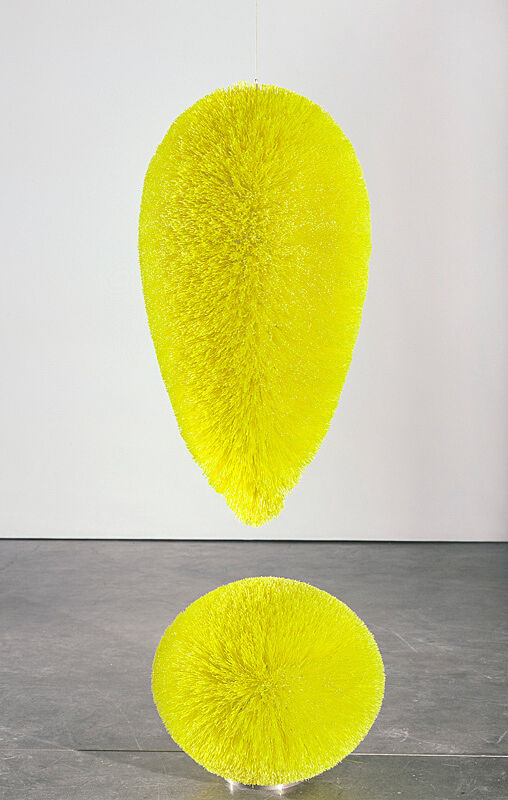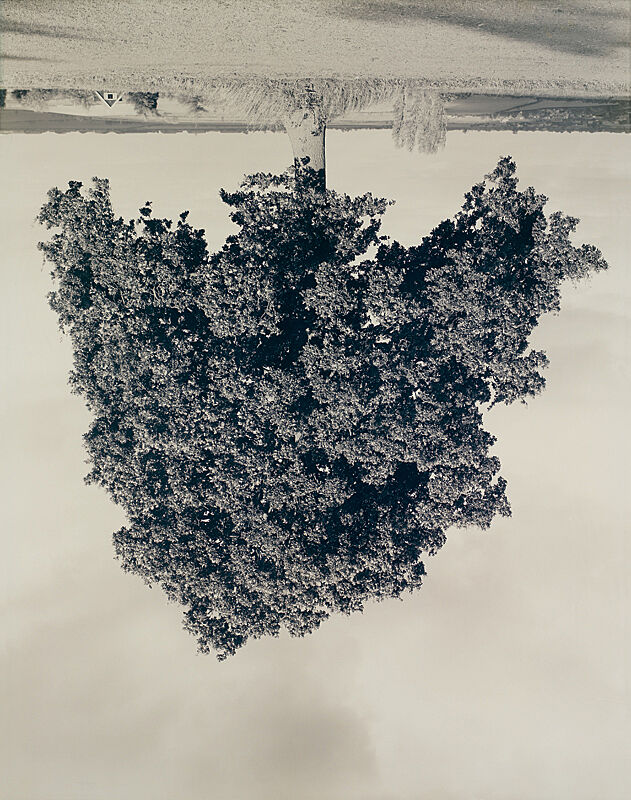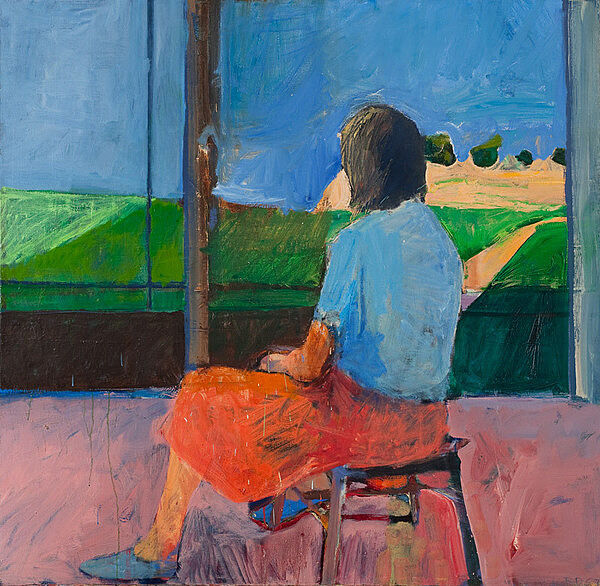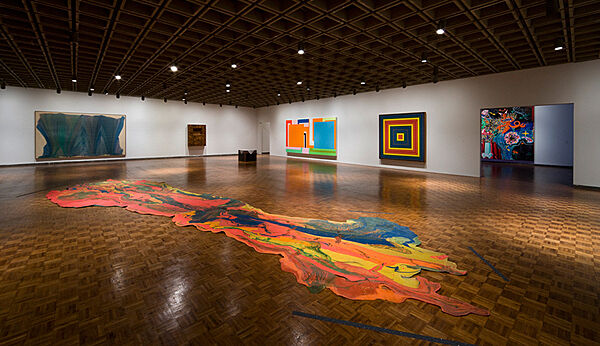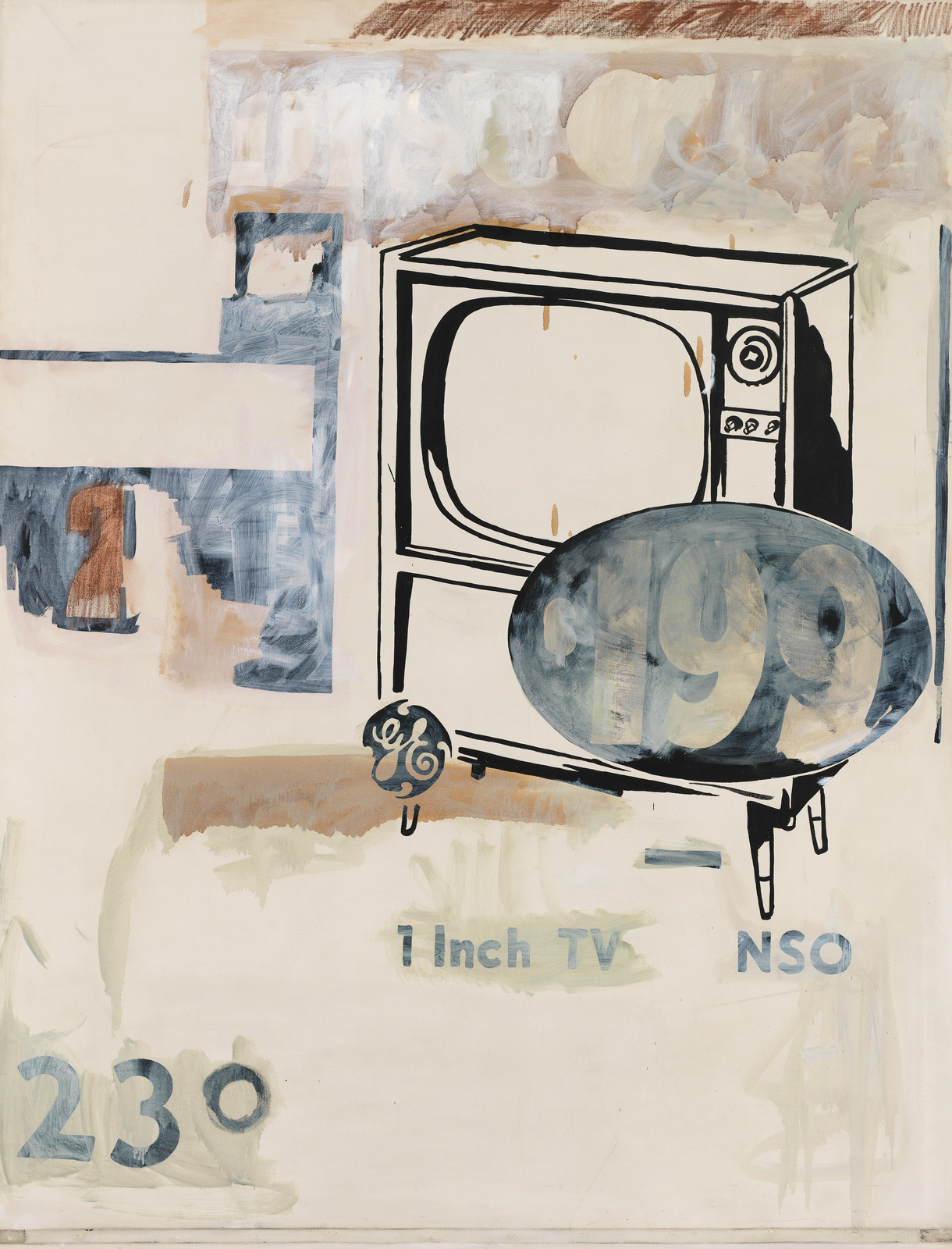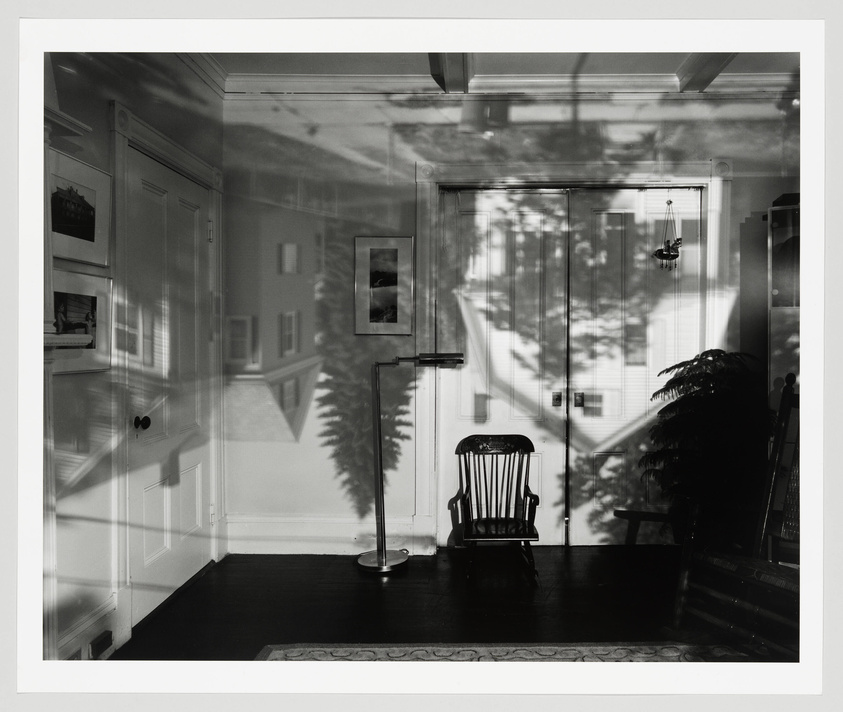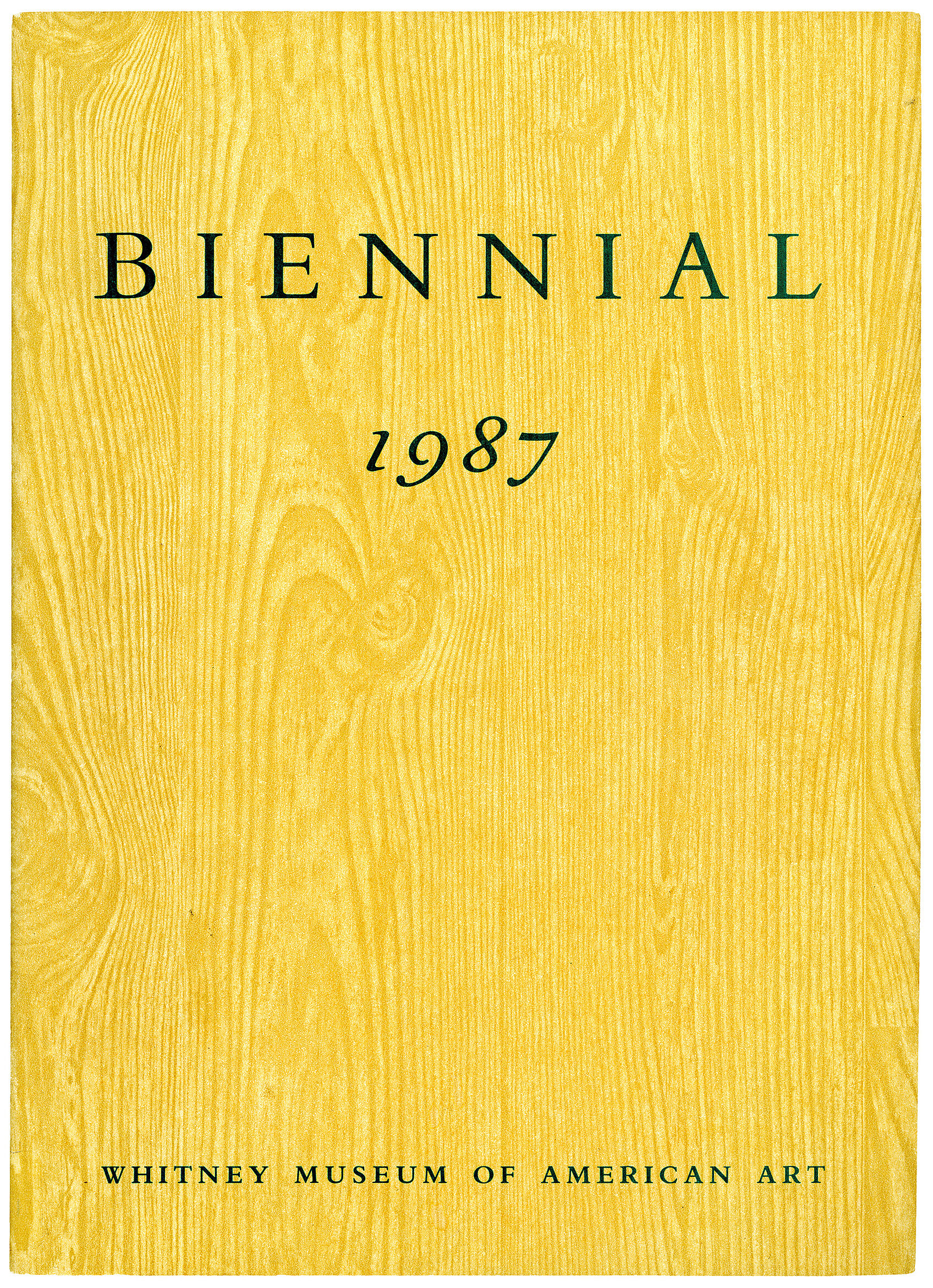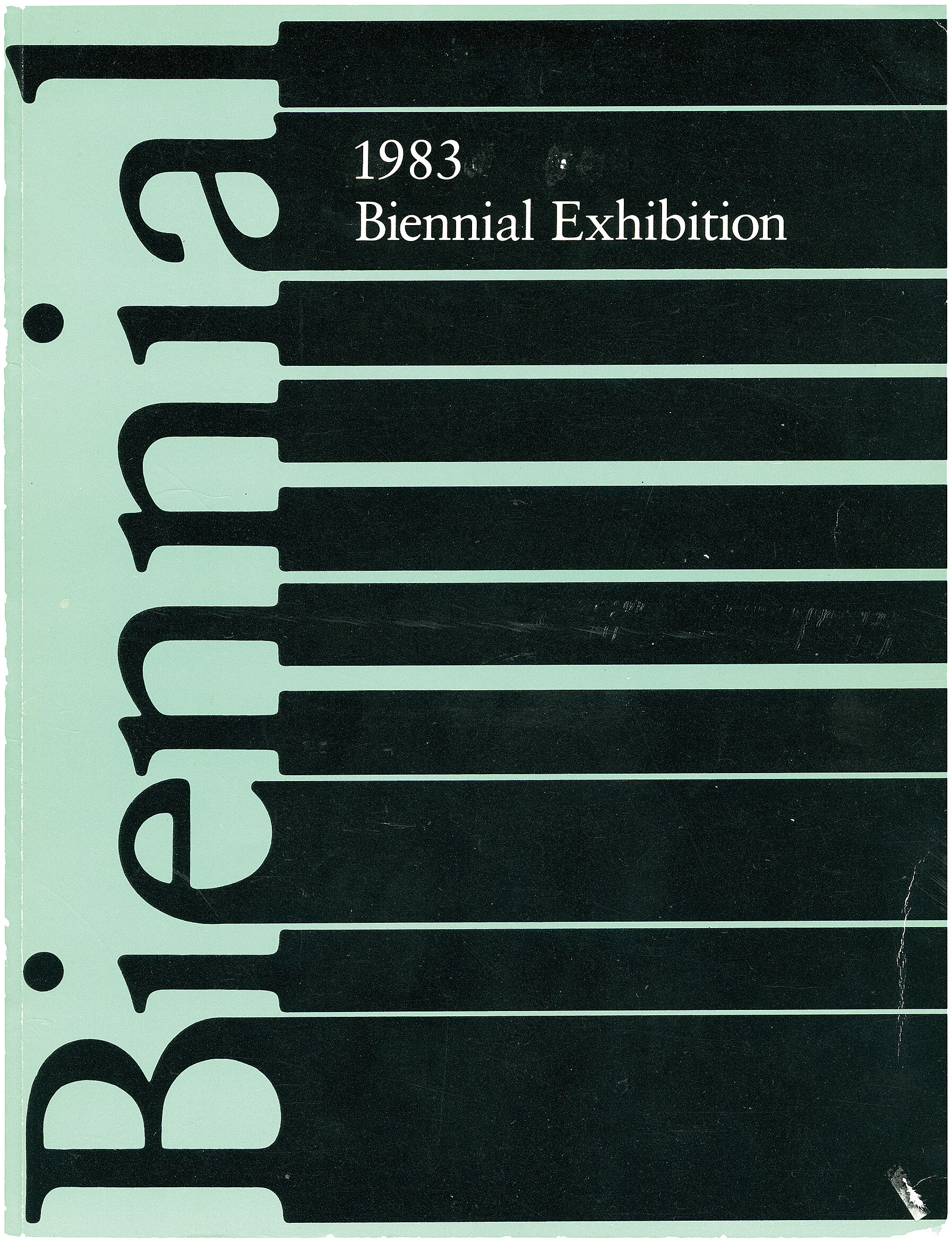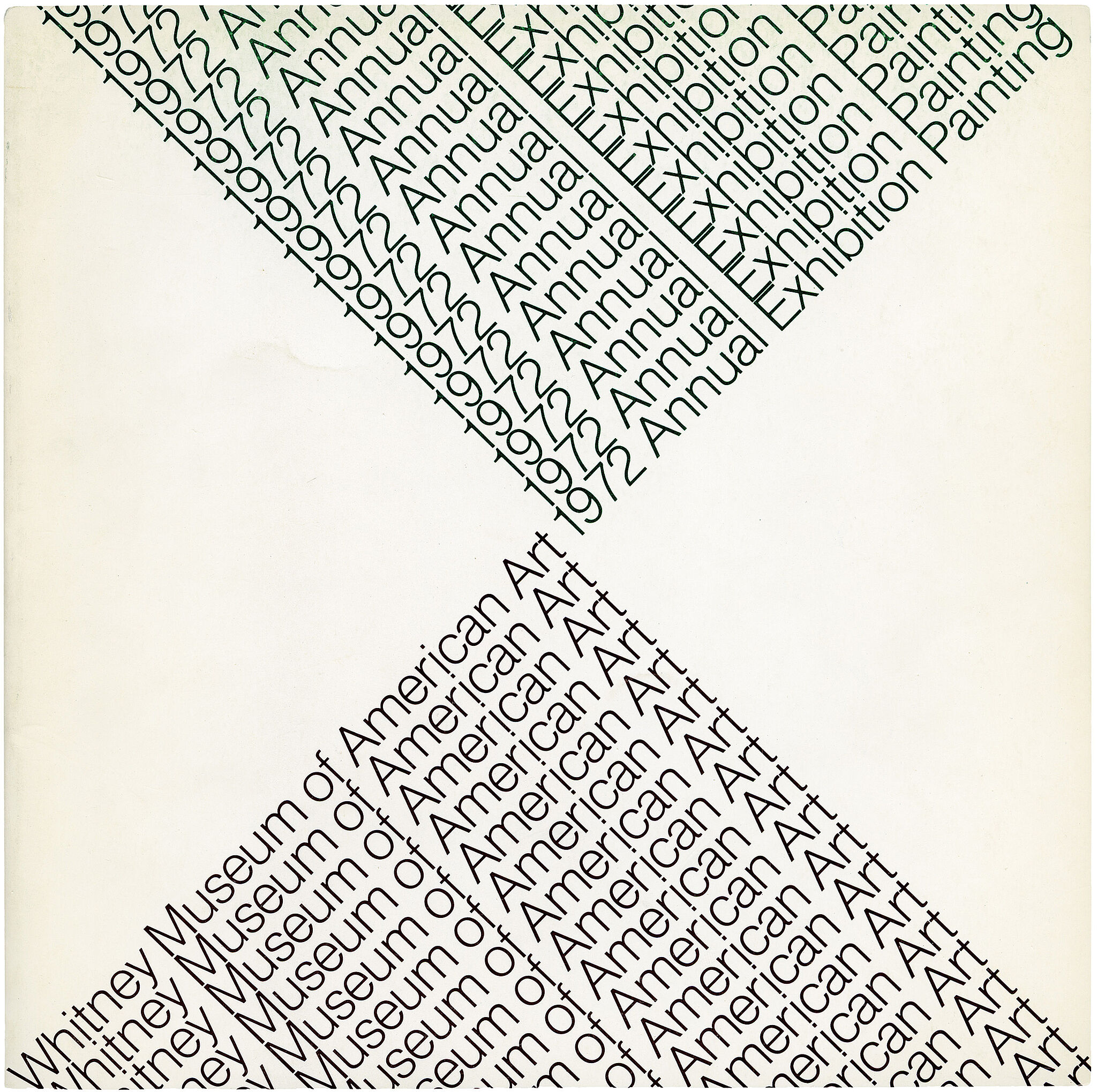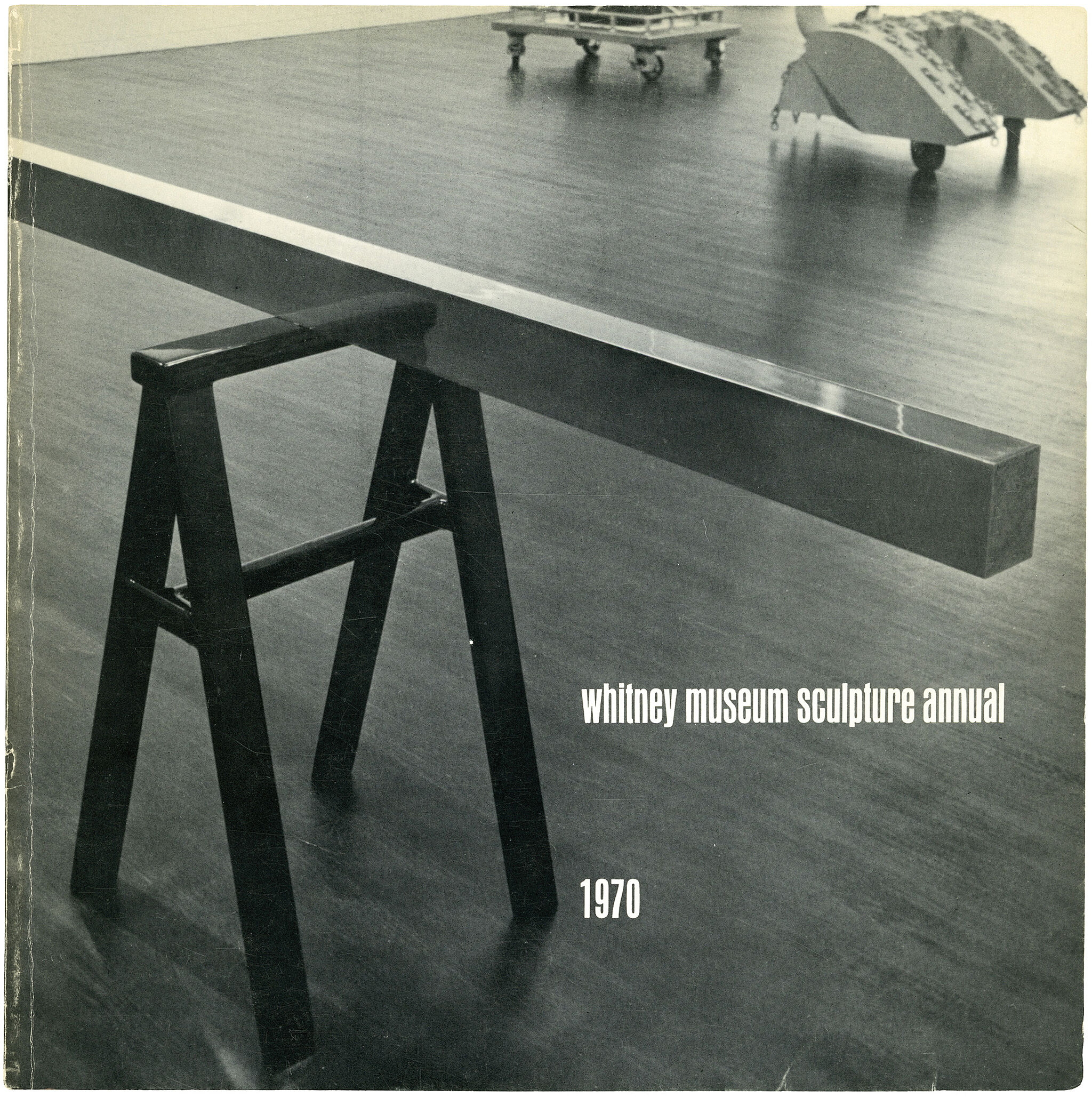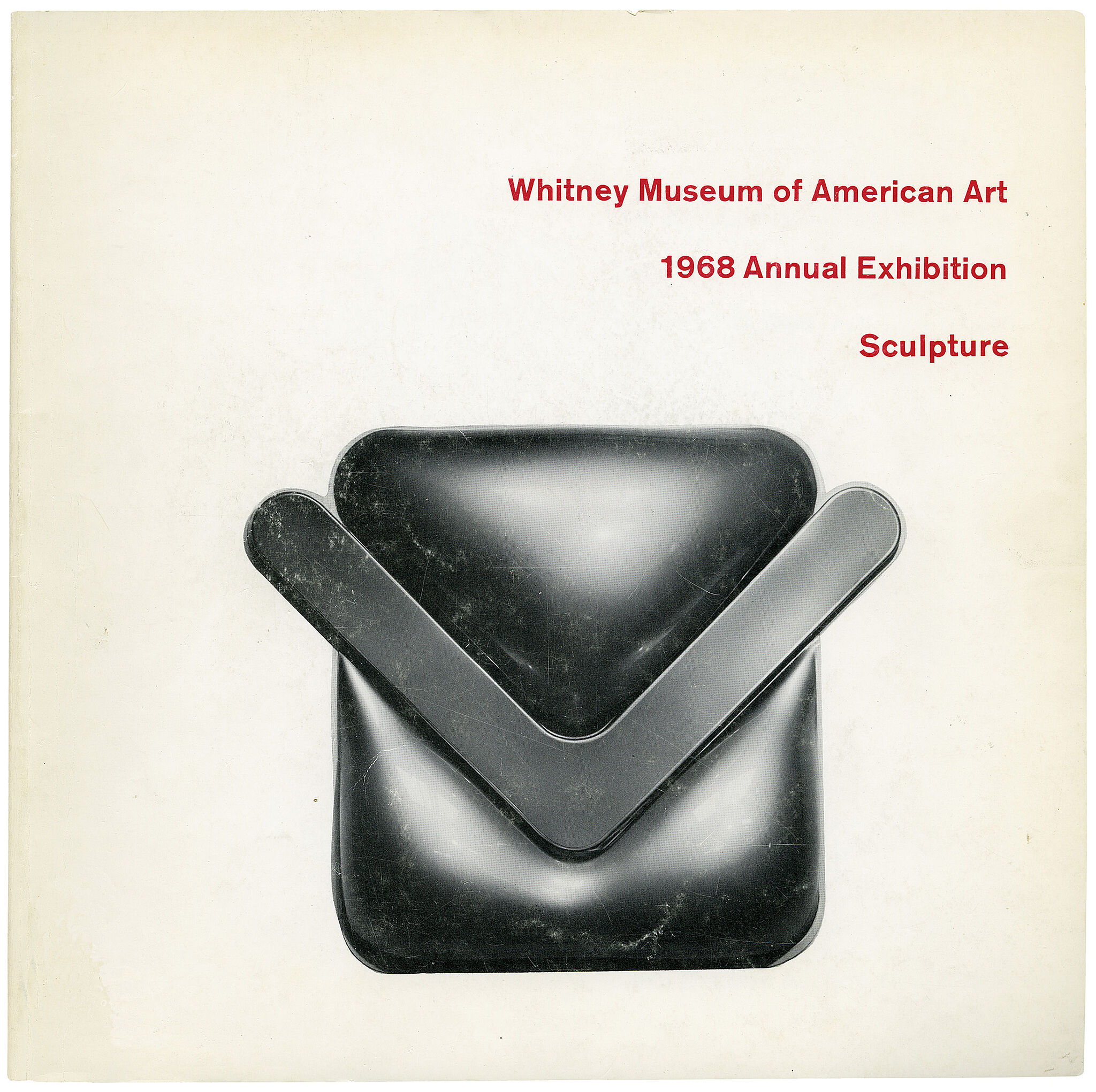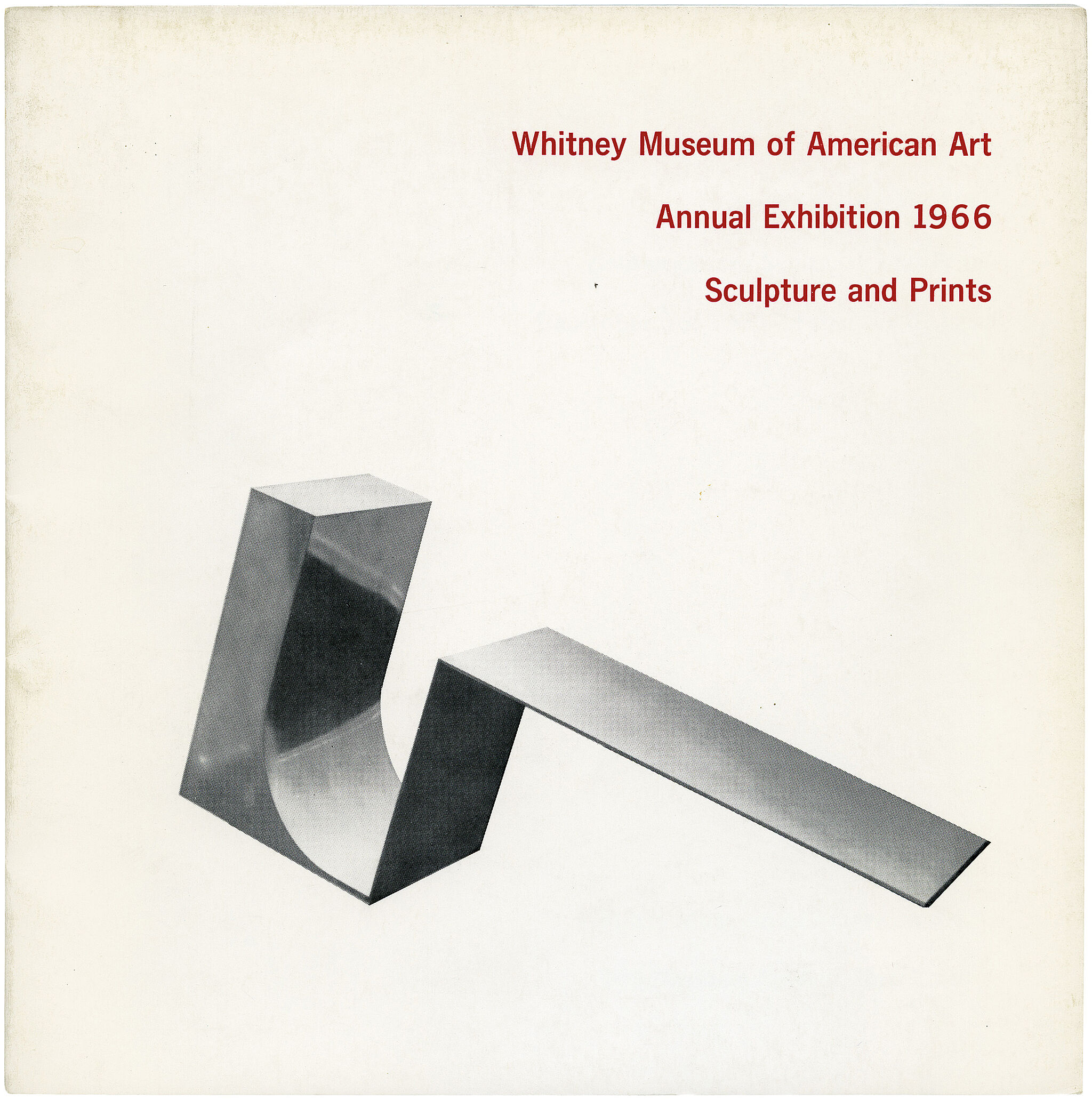Richard Artschwager
1923–2013
Over the course of six decades Richard Artschwager produced sculptures, paintings, drawings, and architectural interventions that consistently sidestepped the art- historical categorizations of their times. During the 1950s Artschwager supported himself as a cabinetmaker, but by the early 1960s he felt increasingly compelled to make what he deemed “useless objects” rather than utilitarian furniture. Artschwager’s technical abilities informed his artistic sensibility, and he continued to use wood, and plywood in particular, for his sculptures. But he covered the constructions with melamine laminate (better known by the commercial name Formica), an unlikely medium that he described as “the great ugly material, the horror of the age.” More commonly found on luncheonette counters than in museums or art galleries, Formica proved a productive choice for an artist interested in the pictorial qualities of sculpture.
For Description of Table, Artschwager fashioned a plywood box and covered the sides with various patterned laminates that approximate wood grain, the negative space between and beneath its legs, and a tablecloth. Its rigid geometries and bilateral symmetry evoke Minimalist sculpture even as the work remains playfully representational. The commercial materials invoke the Pop aesthetic of combining “high” art with “low” mediums and techniques, yet the artist also privileged the trompe l’oeil effects of the synthetic surfaces. By optically mimicking the negative space beneath the table alongside the textures of woven fabric and striated wood on a continuous plane, Artschwager’s Description of Table is at once an object and a picture of an object.
Introduction
Richard Ernst Artschwager (December 26, 1923 – February 9, 2013) was an American painter, illustrator and sculptor. His work has associations with Pop Art, Conceptual art and Minimalism.
Wikidata identifier
Q568262
Information from Wikipedia, made available under the Creative Commons Attribution-ShareAlike License . Accessed December 4, 2025.
On view
Passenger Elevator 1, Passenger Elevator 2, Passenger Elevator 3, Art Elevator
First acquired
1966
Date of birth
December 26, 1923

